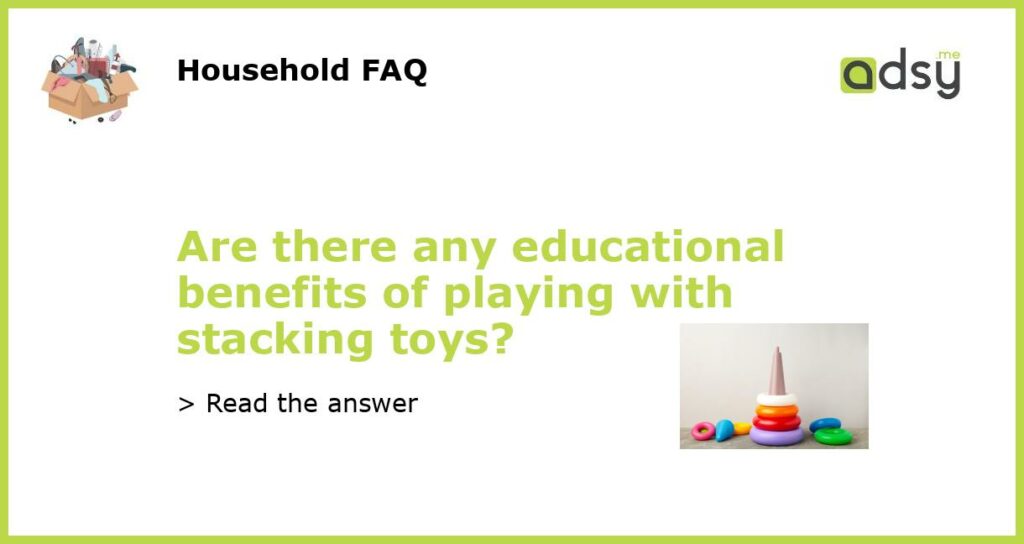Introduction
Stacking toys are a classic childhood staple, consisting of colorful, stackable blocks or rings that can be assembled in various ways. While many may view these toys simply as a means of entertainment, they also offer numerous educational benefits. This article will explore the cognitive, motor, and social advantages of playing with stacking toys, shedding light on why they should be an integral part of every child’s playtime.
Cognitive Development
Playing with stacking toys can significantly contribute to a child’s cognitive development. As children experiment with stacking blocks or rings, they engage in problem-solving and critical thinking. They learn to analyze shapes, sizes, and weights, honing their spatial awareness and geometric understanding.
Additionally, stacking toys are excellent tools for promoting hand-eye coordination. Children must carefully place each piece in the correct position, developing their ability to align their visual perception with their fine motor skills. This coordination is a fundamental skill that extends beyond stacking toys and is crucial for tasks like writing and playing sports.
Fine and Gross Motor Skills
Stacking toys also have a significant impact on a child’s fine and gross motor skills. Fine motor skills involve the coordination of small muscle movements, such as those used for picking up objects or holding a pencil. By manipulating and handling the individual pieces of a stacking toy, children strengthen their hand muscles and improve their dexterity.
Furthermore, the act of stacking the blocks or rings requires balance and stability, enhancing a child’s gross motor skills. As they carefully place each piece on top of another, they practice controlling their movements and coordinating their body’s larger muscle groups. These skills are essential for physical activities like walking, running, and playing sports.
Language and Social Interaction
Stacking toys can also facilitate language development and social interaction. When playing with these toys, children often engage in conversations with their peers or caregivers. They learn to describe the colors, sizes, and shapes of the pieces they are using, expanding their vocabulary and improving their ability to express themselves.
Furthermore, playing with stacking toys in a group setting encourages collaboration and teamwork. Children can take turns adding pieces to the stack, developing patience and social skills like sharing and cooperation. Additionally, they learn to express their ideas, listen to others, and negotiate when conflicts arise during the construction process.
Creativity and Imagination
Lastly, stacking toys foster creativity and imagination in children. These toys offer endless possibilities for construction and design, allowing children to create unique structures and patterns. They promote divergent thinking, encouraging children to explore alternative solutions instead of following a predetermined set of rules.
Additionally, stacking toys can serve as a platform for imaginative play. Children can use the blocks or rings to build houses, castles, or even imaginary worlds. This type of play enhances their storytelling abilities, encourages problem-solving within a narrative context, and promotes imaginative thinking.
Playing with stacking toys offers numerous educational benefits for children. From cognitive development and motor skill improvement to enhanced language and social interaction, these toys provide a well-rounded learning experience. By including stacking toys in a child’s playtime, parents and caregivers can nurture their creativity, critical thinking, and overall development.






